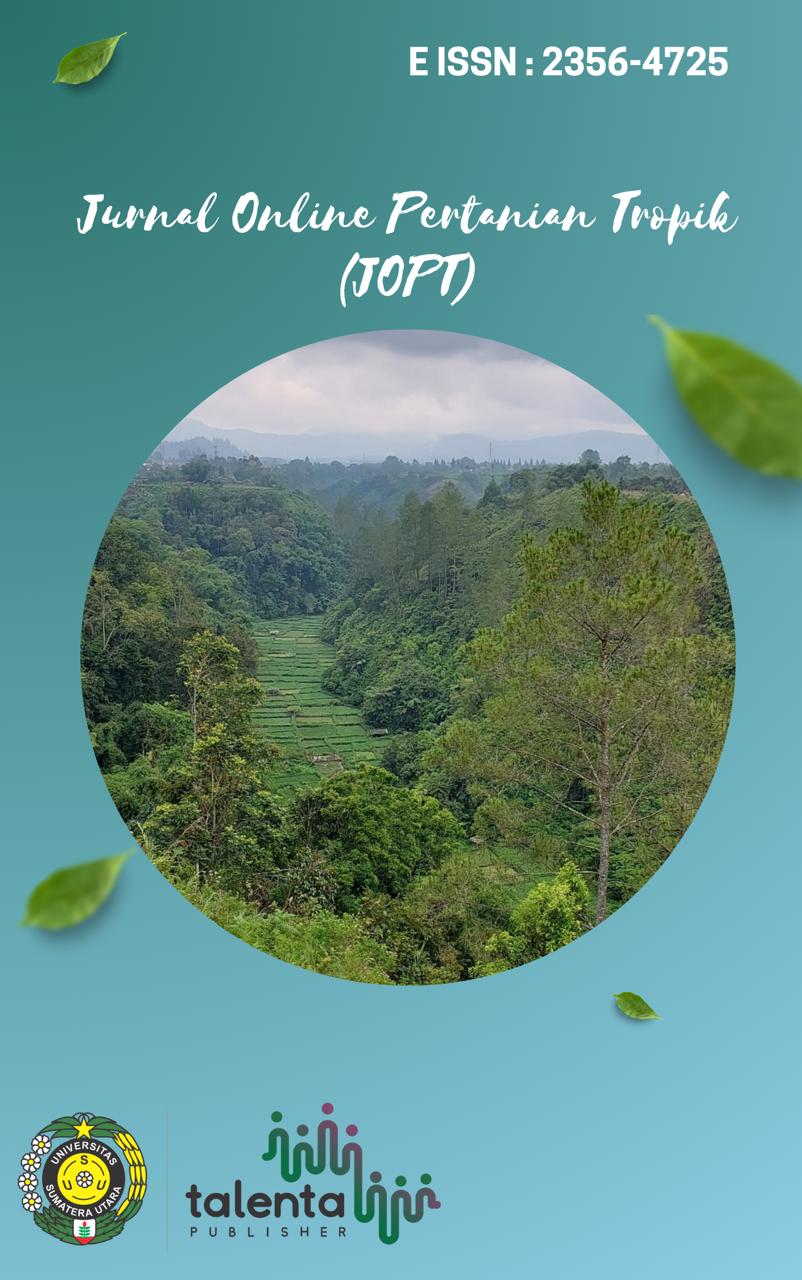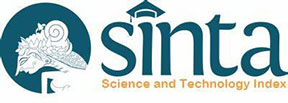Analysis of Income and Feasibility of Shallot Farming (Allium ascalonicum, L) Group of Combined farmer groups “Tani Hasil” from Gandasuli Village, Brebes Regency
Analysis of Income and Feasibility of Shallot Farming (Allium ascalonicum, L) Group of Gapoktan “Tani Hasil†from Gandasuli Village, Brebes Regency
DOI:
https://doi.org/10.32734/jpt.v11i1.11945Keywords:
shallot, yield, income, feasibility, BrebesAbstract
Shallot (Allium ascalonicum, L) is one of the leading agricultural commodities in Brebes Regency which is the national shallot center. Analysis of income and feasibility of shallot farming in Brebes has never been studied. This research was conducted to determine the study of income analysis and the feasibility of shallot farming carried out by farmers who are members of a combined farmer group (Gapoktan) Gandasuli sub-district, Brebes Regency. This research was conducted from February to March 2023 on shallot farmers at the Gapoktan located in Gandasuli Village, Brebes District, Brebes Regency. The location selection was carried out purposively with the consideration that Gapoktan is a combination of farmer groups that consistently cultivate shallots throughout the year. The research method used in this study is a qualitative method with a case study type of research. The data used are primary data and secondary data. The shallot farming business obtained a total farmer income of Rp. 200,000,000 with a total production cost of Rp. 152,110,000 and the income received is IDR 47,890,000. The results of the analysis obtained the R/C ratio value of 1.315 which indicates that the shallot farming carried out by Gapoktan "Tanihasil" Gandasuli Village, Brebes Regency is feasible to cultivate with a BEP value of Rp. 190,140,000. Farmers with a productive age and long experience working in shallot farming will influence the success of shallot cultivation.
Downloads
References
Aldilla, H. F., Fariyanti, A., & Tinaprilla, N. (2015). Profitability analysis of shallot farming based on seasons in three central production districts in Indonesia. SEPA, 11(2), 249–260.
Aldilla, H. F., Fariyanti, A., & Nurmalina, R. (2017). Competitiveness of shallots in central production areas in Indonesia. Journal of Management and Agribusiness, 14 (1), 43–53.
Amaral, D. E. P., Adar, D., & Kapa, M. M. J. (2019). Economic analysis of shallot farming of Tuk-Tuk variety in Fatuketi Village, Kakuluk Mesak District, Belu Regency. Buletin Excellentia, 7(1), 106–114.
Annisa, I., Asmarantaka, R. W., & Nurmalina, R. (2018). Marketing efficiency of shallots (Case study: Brebes Regency, Central Java Province). Jurnal Ilmiah Manajemen, 8(2), 254–271.
Mardiyanto, T. C., & Pangestuti, R. (2018). Factors influencing farmers' response to environmentally friendly shallot cultivation technology in Tegal Regency. Jurnal Agritexts, 42(2), 106–118.
Nearti, Y., Fachrudin, B. B., & Awaliah, R. (2020). Feasibility analysis of rainfed lowland rice (Oryza sativa) farming (Case study in Sungai Dua Village, Rambutan District, Banyuasin Regency). Jurnal AGRIPITA, 4(2), 61–67.
Pranata, A., & Umam, A. T. (2015). The effect of shallot prices on shallot production in Central Java. JEJAK: Journal of Economics and Policy, 8(1), 36–44.
Putrasemadja, S., & Suwandi. (1996). Shallots in Indonesia. Vegetable Crop Research Institute, Center for Horticultural Research and Development, Agricultural Research and Development Agency. Lembang – Bandung. ISBN: 979-8304-07-1.
Rahim, A. A. (2015). Break-even point analysis of shallot (Allium ascolinicum L) farming of Lembah Palu variety in Taipa Village, North Palu District, Palu City. e-J. Agrotekbis, 3(3), 353–359.
Rasoki, T., Fariyanti, A., & Rifin, A. (2016). Comparison of marketing efficiency of consumption and seed shallots in Brebes Regency, Central Java Province. Jurnal Agro Ekonomi, 34(2), 145–160.
Ratnawati, I., Noor, T. I., & Hakim, D. L. (2019). Feasibility analysis of red chili farming (Case study on Mekar Subur Farmers Group, Maparah Village, Panjalu District, Ciamis Regency). Jurnal Agribusiness, 6(2), 422–429.
Shinta, A. (2011). Farm management science. Universitas Brawijaya Press (UB Press), Malang.
Downloads
Published
How to Cite
Issue
Section
License
Copyright (c) 2024 Jurnal Online Pertanian Tropik

This work is licensed under a Creative Commons Attribution-ShareAlike 4.0 International License.






















